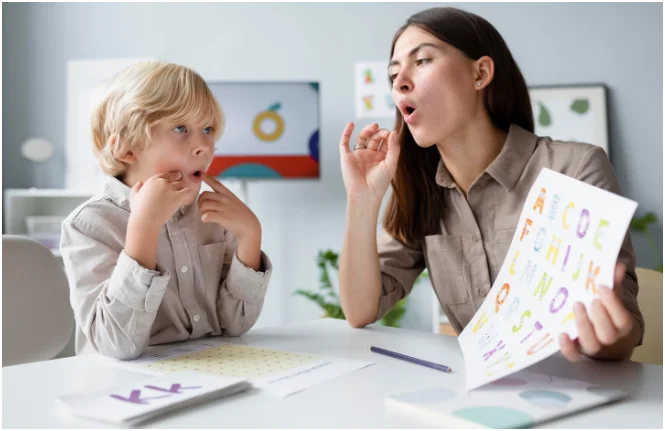1. Read aloud daily—then talk about the story
Reading aloud is one of the strongest predictors of early literacy and long-term academic success. A large-scale study from the American Academy of Pediatrics links shared reading to better language development and social-emotional growth. Aim for 10–20 minutes a day and turn reading into a conversation: ask open-ended questions (Why do you think the character did that?), make predictions, and connect the plot to your child’s experiences. Tip: Re-read favorites; repetition deepens vocabulary and comprehension.
2. Narrate your day to build rich vocabulary
Children learn words by hearing them used in context—often. Narrate everyday activities in simple, complete sentences: We’re slicing the apples into thin pieces. They’re crunchy and sweet. Research suggests kids may need to hear a new word 10–20 times in varied contexts to learn it. Add sensory words (smooth, bumpy, sour) and compare/contrast language (heavier/lighter). Tip: Use “think-alouds” to model problem-solving language: I see two socks that don’t match—let’s look for stripes.
3.Encourage play that sparks language
Open-ended play fuels communication, creativity, and executive function. Pretend play, in particular, boosts narrative skills and social language as kids negotiate roles and storylines. Provide simple props (scarves, boxes, kitchen tools) and let your child lead. Rotate materials every few weeks to keep ideas fresh. Tip: Join as a co-player—mirror their language, expand it (Child: Dog run. Adult: Yes, the big brown dog is running fast!), and introduce new vocabulary during play scenes.
4. Make music part of your routine
Songs, rhymes, and rhythmic activities reinforce phonological awareness—the ability to hear and manipulate sounds—which is foundational for reading. Studies show that regular musical engagement correlates with improved auditory processing and verbal memory. Sing during transitions (clean-up songs, bath-time rhymes), clap syllables in names, and play call-and-response games. Tip: Choose songs with alliteration and rhyme to highlight sound patterns naturally.
5. Embrace bilingual exposure early
Early childhood is a prime window for acquiring more than one language; the brain is especially receptive to new sounds and structures. Bilingualism is linked to cognitive flexibility, better problem-solving, and strong metalinguistic awareness. You can start with simple routines: label objects in both languages, dedicate certain activities (like mealtime or music time) to the second language, and read bilingual picture books. For families seeking immersive environments, a high-quality program such as a Spanish immersion preschool in San Antonio can provide consistent language exposure, cultural learning, and age-appropriate instruction that accelerates fluency and confidence.
6. Use screen time intentionally—and talk about it
Not all screen time is equal. The strongest gains come from high-quality, age-appropriate content paired with adult interaction. Co-view and discuss what you’re watching: What happened first? How did the character solve the problem? Research from organizations like the AAP suggests that conversation and context transform media into a language-learning tool. Tip: Balance passive viewing with active creation—record a short “news report,” narrate a drawing timelapse, or make a photo storybook together.
7. Create routines that invite conversation
Routines reduce friction and open space for connection. Build talk-friendly moments into predictable parts of the day: a two-minute “rose and thorn” at dinner (best and hardest parts of the day), a bedtime gratitude list, or a morning “word of the day.” Consistent rituals help children practice turn-taking, recall, and expressive language. Tip: Keep a family word wall on the fridge—add new words you discover, draw simple pictures, and use them throughout the week.
Putting it all together
Language growth thrives on consistency, interaction, and joy. When children hear rich words, use them in meaningful contexts, and see them in print, they build a foundation that supports reading, critical thinking, and social confidence. Start small—one song today, one question at storytime tonight—and layer these habits into everyday life. Over time, you’ll see clearer communication, stronger curiosity, and a child who’s ready for the next challenge.
Note: For families exploring local options, consider a high-quality immersion program—such as a Spanish immersion preschool in San Antonio—to reinforce daily language routines with expert guidance and peer interaction.









